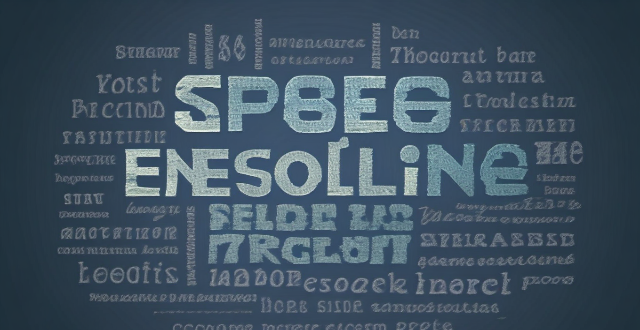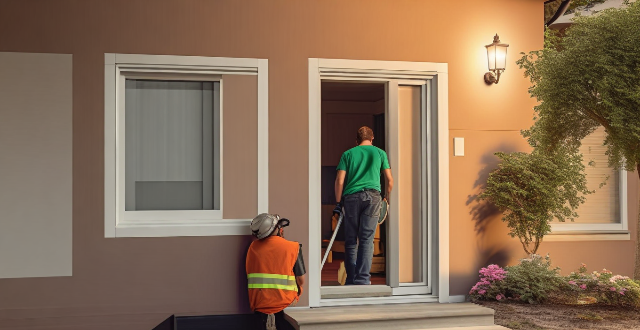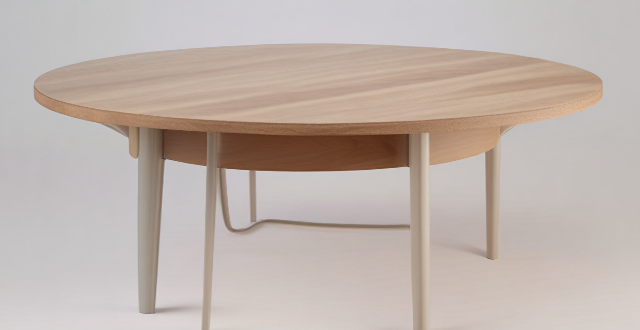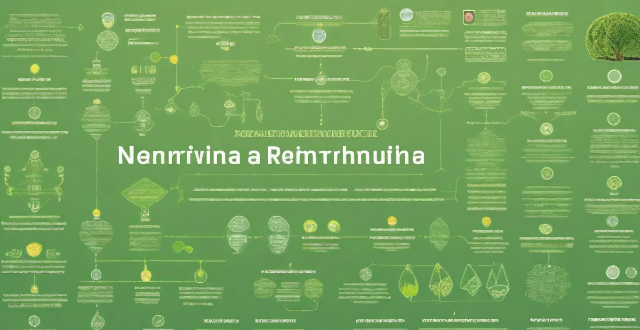Layer Loose

What type of clothing should I pack for a week-long hiking trip ?
When packing for a week-long hiking trip, consider weather conditions, terrain, and activities. Layering is key, with essential layers including moisture-wicking shirts, lightweight pants or shorts, fleece jackets or vests, warm pants, and a waterproof and windproof jacket. Proper footwear is crucial, such as hiking boots, trail runners, and sandals. Don't forget accessories like hats, gloves, sunglasses, neck gaiters, and trekking poles. Additional items to consider include rain gear, extra layers, a towel, and a headlamp or flashlight. Pack smart and only bring what you need to avoid unnecessary weight.

What type of clothing is suitable for winter sports activities ?
When engaging in winter sports activities, it is crucialWhen engaging in winter sports activities, it is crucial ensure comfort, safety, and it is crucial to dress appropriately to ensure comfort, safety, and protection from the cold weather. Here's a detailed guide on what type of clothing is suitable for various winter sports: ## **Essential Layering System** ### **Base Layer:** - **Material:** Moisture-wicking fabrics like synthetics or merino wool. - **Purpose:** To keep sweat away from your body and maintain body temperature. - **Example:** Long-sleeve thermal shirts and tights. ### **Mid Layer:** - **Material:** Insulating fabrics like fleece or down. - **Purpose:** To provide warmth and insulation. - **Example:** Fleece jackets or lightweight down vests. ### **Outer Layer:** - **Material:** Waterproof and breathable fabrics like Gore-Tex. - **Purpose:** To protect against wind, snow, and rain while allowing moisture to escape. - **Example:** Waterproof ski jackets or snowboard pants. ## **Head-to-Toe Gear** ### **Headgear:** - **Beanie or helmet liner:** To keep your head warm and protected under a helmet. - **Neck gaiter or scarf:** To cover your neck and face from cold winds. ### **Handwear:** - **Gloves or mittens:** Waterproof and insulated to keep hands warm and dry. - **Glove liners:** Thin gloves worn underneath for added warmth. ### **Footwear:** - **Waterproof boots:** Insulated boots that are waterproof and provide good traction. - **Socks:** Thick, warm socks made of wool or synthetic blends. ### **Legwear:** - **Waterproof snow pants:** To keep your legs dry and protected from the snow. - **Base layers for legs:** Long underwear or tights for added warmth. ### **Eye Protection:** - **Goggles:** Protective goggles that shield your eyes from glare and UV rays. - **Sunglasses:** Polarized sunglasses for cloudy days or less intense activities. ## **Additional Accessories** - **Helmet:** Essential for activities like skiing and snowboarding to protect your head from impacts. - **Neck warmers:** Can be added for extra warmth around the neck area. - **Gaiters:** Helpful for keeping snow out of boots and pants. By following this comprehensive guide, you can ensure that you have the right clothing and gear for enjoying your favorite winter sports safely and comfortably. Remember, layering is key to adapting to changing temperatures and activity levels throughout the day.

Can you teach me how to layer different liquors in a drink ?
Layering liquors in a drink is a fun and visually appealing way to create a cocktail. Here's a step-by-step guide on how to do it: Materials Needed: - Clear glass or jar - Spoon - Different liquors of varying densities Steps: 1. Choose your liquors: Select three or more liquors that have different densities. The general rule is that the heavier liquid goes at the bottom and the lighter one on top. 2. Chill your liquors: Chill your liquors before starting. This will help them mix less when pouring. 3. Pour the first liquor: Pour the heaviest liquor into the glass first. Tilt the glass slightly and slowly pour the liquor down the side of the glass. 4. Use a bar spoon: Use the spoon to gently place it at the surface level of the first liquor. Gently pour the second liquor over the rounded part of the spoon. 5. Repeat with other liquors: Repeat the process with the other liquors, making sure to always pour over the spoon and down the side of the glass. 6. Enjoy your layered drink: Once all layers are added, enjoy your visually appealing cocktail!

How can I achieve a flawless base without looking cakey ?
Achieving a flawless base is every makeup enthusiast's dream. However, it can be challenging to get the perfect balance between coverage and avoiding a cakey appearance. In this guide, we will discuss some tips and techniques to help you achieve a flawless base without looking cakey. The first step in achieving a flawless base is understanding your skin type. Different skin types require different products and techniques to achieve the desired look. Here are some general guidelines for each skin type: - **Oily Skin**: Use oil-free or mattifying primers and foundations to control shine and prevent slipping. Set with a loose powder to absorb excess oil. - **Dry Skin**: Moisturize well before applying makeup and use hydrating primers and foundations that won't cling to dry patches. Avoid setting with powder on areas that tend to flake or peel. - **Combination Skin**: Use a lightweight, hydrating primer on dry areas and an oil-controlling one on oily areas. Choose a foundation that works well with both skin types and set with a translucent powder where needed. - **Sensitive Skin**: Look for hypoallergenic and fragrance-free products to avoid irritation. Test new products on a small area of skin before using them all over your face. Proper skin preparation is key to achieving a flawless base. Follow these steps before applying makeup: 1. **Cleanse**: Start by washing your face with a gentle cleanser suitable for your skin type. 2. **Tone**: Use a toner to balance your skin's pH level and prepare it for moisturizer. 3. **Moisturize**: Apply a lightweight moisturizer that suits your skin type, focusing on any dry areas. 4. **Prime**: Choose a primer that addresses your specific concerns (e.g., pore-filling, illuminating, mattifying) and apply it evenly across your face. Selecting the right foundation is crucial for achieving a flawless base without looking cakey. Consider the following factors when choosing a foundation: - **Coverage**: Determine how much coverage you need based on your concerns (e.g., blemishes, redness, discoloration). Lightweight formulas like tinted moisturizers or BB creams offer sheer coverage, while full-coverage foundations provide more substantial concealment. - **Finish**: Choose a finish that complements your skin type and desired look (e.g., dewy, matte, natural). Oily skin may prefer a matte finish, while dry skin may benefit from a dewy or satin finish. - **Shade**: Find a shade that matches your skin tone exactly. Test foundations on your jawline in natural light to ensure a seamless blend with your neck. Once you've selected the right foundation, it's time to apply it using the following techniques: 1. **Start with Less**: Begin by applying a small amount of foundation to your face and build up coverage as needed. This helps prevent over-application and ensures a more natural look. 2. **Use the Right Tools**: Choose tools that work best for your foundation type (e.g., brushes for liquid formulas, sponges for cream or mousse textures). Dampen your sponge slightly if using one to help sheer out the product and avoid streakiness. 3. **Blend Well**: Blend the foundation thoroughly into your skin, paying extra attention to areas where it tends to collect or cling (e.g., around the nose, mouth, and eyes). Use downward strokes to avoid lifting the foundation off your skin. 4. **Set with Powder**: Set your foundation with a loose powder only where necessary (e.g., T-zone) to control shine and extend wear time. Be careful not to overdo it, as too much powder can make your base look cakey. After applying your foundation, you may still have some imperfections that need concealing. Here's how to do it without adding too much product: 1. **Use Concealer Sparingly**: Apply concealer only where needed (e.g., under eyes, blemishes) using a small brush or your fingertip. Tap the product into place rather than rubbing it vigorously. 2. **Set with Powder**: Set concealer with a translucent powder to prevent creasing and ensure longevity. Again, be cautious not to layer on too much powder.

What steps should I take to secure my home before installing a security system ?
Before installing a security system, it is important to take certain steps to secure your home. These steps include assessing your home's vulnerabilities, strengthening doors and windows, improving lighting around your home, installing locks and alarms, and securing your garage. By following these steps, you can significantly improve the security of your home before installing a security system.

How can I treat a burn before seeking medical attention ?
Burns can be painful and potentially dangerous, especiallyBurns can be painful and potentially dangerous, especially cover a large area of the It's important to seek medical attention as soon as possible for any burn that is serious or covers a significant portion of your body. However, there are steps you can take to treat a burn before getting medical help. Here's what you should do: - Cool the Burn: Run cool (not cold) water over the burn for at least 10 minutes. Avoid putting ice directly on the burn. - Remove Heat Source: If the burn is due to contact with a hot object like a stove or iron, carefully remove the heat source without putting yourself at risk. - Remove Constricting Items: If any jewelry or clothing is near the burned area and might constrict as swelling occurs, remove it if possible without causing further injury. - Cover the Burn: After cooling the burn, gently cover it with a clean cloth or sterile dressing to protect it from infection and further injury. - Take Pain Relief: Over-the-counter pain relievers like ibuprofen or acetaminophen can help manage pain. Follow the instructions on the packaging and consult a healthcare professional if unsure. - Stay Hydrated: Drink plenty of fluids to prevent dehydration, which can occur more quickly when your skin is damaged. While the above steps can help with minor burns, it's crucial to seek medical attention for more serious burns. You should see a doctor for burns that are deeper than the top layer of skin (second-degree burns), cover an area larger than your hand, are on the face, hands, feet, groin, buttocks, or major joints, are caused by electricity, radiation, or chemicals, or show signs of infection such as increased redness, pain, or fever. Remember, these guidelines are for initial first aid and should never replace professional medical advice. Always seek medical attention for serious burns as soon as possible.

How do I fix a squeaky floorboard without removing it ?
Squeaky floorboards can be a nuisance, but they don't necessarily require a full board replacement to fix. Here's a summary of steps you can take to quiet your floors without major renovation: 1. **Identify the Squeak's Source**: Locate the area where the squeak is loudest by walking over it and tapping nearby boards. Check for loose nails or screws. 2. **Tighten Loose Fasteners**: If the issue is due to loose nails or screws, tighten them using a drill with a screwdriver bit or a nail punch and hammer. 3. **Lubricate the Board**: Apply graphite powder, slide in shim coated with petroleum jelly into gaps, or use a lubricant spray to reduce friction. 4. **Add Support Underneath**: Use wood shims and construction adhesive to fill gaps and provide extra support. Reinforce or replace weak joists if necessary. 5. **Fill Gaps Between Boards**: For small gaps, use wood filler or apply wood glue along tongue and groove joints. Sand down any high spots. 6. **Maintain Proper Humidity Levels**: Use a dehumidifier in humid areas and ensure good air circulation beneath the floor. Monitor seasonal changes in humidity and adjust accordingly. By addressing these issues, you can eliminate squeaky floorboards without removing them. Regular maintenance and early problem detection can help prevent minor issues from becoming major ones.

What are some tips for fixing a wobbly table or chair leg ?
Fixing a wobbly table or chair leg requires identifying the source of the wobble, tightening loose screws and bolts, replacing missing or worn-out parts, using wood glue to reinforce joints, shimming up shorter legs, reinforcing with metal braces, and calling a professional if necessary.

How do I clean my iPhone screen protector ?
## How to Clean Your iPhone Screen Protector Cleaning your iPhone screen protector is crucial for maintaining display clarity and touch responsiveness. Over time, dust, dirt, and fingerprints can accumulate, reducing visual quality. Here's a guide on how to clean it effectively: ### Tools Needed - Microfiber cloth - Distilled water - Mild soap or specialized cleaning solution - Soft-bristled brush (optional) - Razor blade or plastic spudger (for stubborn particles, use with caution) ### Cleaning Steps 1. **Power Off**: Turn off your iPhone to avoid accidental taps or sensitivity issues. 2. **Remove Loose Particles**: Tap the screen protector edges against a soft surface to dislodge loose particles. Use a soft-bristled brush for stubborn pieces. 3. **Wet Cloth**: Lightly dampen a microfiber cloth with distilled water. 4. **Apply Cleaning Solution**: Apply mild soap or a specialized solution to the cloth instead of directly on the screen protector. 5. **Wipe**: Gently wipe in circular motions, paying extra attention to smudges or fingerprints. 6. **Dry**: Use a dry part of the cloth to remove moisture, ensuring no water streaks remain. 7. **Deal with Stubborn Marks**: Use a cleaning pen or specialized solution for difficult marks, following product instructions. 8. **Reattach Screen Protector**: If removed for cleaning, reapply carefully, ensuring proper alignment. 9. **Power On and Test**: Turn your iPhone back on and check touch sensitivity and screen clarity. ### Precautions - Avoid harsh chemicals or abrasive materials to prevent scratches or damage. - Do not press too hard when wiping to avoid lifting or breaking the screen protector. - Consult manufacturer recommendations if unsure about using a particular cleaning product. By following these steps, you can maintain a clean and clear iPhone screen protector for an optimal viewing experience.

How does a network bridge improve internet connectivity ?
A network bridge is a device that connects two or more networks at the data link layer, offering benefits such as reduced congestion, increased security, enhanced performance, cost-effectiveness, and compatibility. It improves internet connectivity by segregating traffic, filtering based on MAC addresses, optimizing routing, and extending the use of existing infrastructure. Bridges are applicable in home, enterprise, and public access networks for connecting devices, separating departmental networks, and providing guest access.

How do you maintain and care for a permanent magnet motor to extend its lifespan ?
Permanent magnet motors are widely used in various industries due to their high efficiency, power density, and reliability. However, proper maintenance and care are essential to extend the lifespan of these motors. Here are some tips on how to maintain and care for a permanent magnet motor: - Regular cleaning, lubrication, thermal management, electrical maintenance, mechanical maintenance, environmental considerations, and preventive maintenance schedule are all important aspects of maintaining a permanent magnet motor. - External and internal cleaning should be done regularly to keep the motor clean from dust, dirt, and debris. Lubrication of bearings and gearbox (if any) should be done according to the manufacturer's recommendations. - Thermal management includes ensuring that the cooling system is functioning properly and monitoring the temperature of the motor during operation. Overheating can cause damage to the magnets and other components. - Electrical maintenance involves checking all electrical connections periodically to ensure they are secure and free from corrosion. Insulation resistance should also be tested periodically to detect any potential issues before they become serious problems. - Mechanical maintenance includes ensuring that the motor shaft is properly aligned with the load and performing vibration analysis periodically to identify any mechanical issues such as imbalance or loose parts. - Environmental considerations involve storing and operating the motor in a dry environment to prevent rust and corrosion. Protection from harsh environmental conditions such as extreme temperatures, chemicals, or moisture should also be considered. - A preventive maintenance schedule should be created based on the manufacturer's recommendations and specific application requirements. Regular inspections and prompt attention to any issues will save time and money in the long run by preventing more significant problems from occurring.

Can you provide examples of successful knowledge frameworks in various disciplines ?
Knowledge frameworks are structured approaches to organizing information within a field of study or practice. Successful examples include the human body systems in medicine, the OSI model in computer science, the language acquisition framework in linguistics, SWOT analysis in business, the ecosystem services framework in environmental science, and Bloom's Taxonomy in education. These frameworks facilitate specialized knowledge, standardize protocol development, guide teaching methods, support decision-making processes, highlight interdependence between natural systems and human well-being, and promote higher-order thinking skills.

Are there any specific feminine hygiene tips for athletes or active women ?
本文为运动员和活跃女性提供了关于女性卫生的实用建议,包括穿着适当的内衣、使用卫生用品、保持个人卫生、保持水分、穿着宽松衣物以及监测月经周期。这些建议有助于她们在运动时保持舒适和自信,同时降低与女性卫生相关的感染风险。